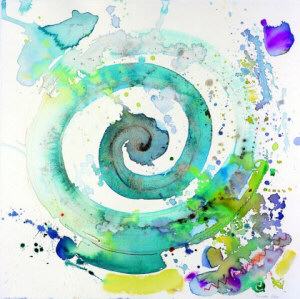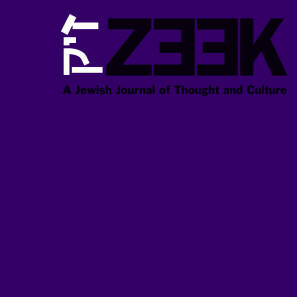 March 06
March 06
The Piyyut is Jewish Soul Music
by Basmat Hazan Arnoff
p. 2 of 2
As the director of the website, Harel is engaged in what he believes is the holy work of gathering and preserving treasures of Jewish tradition that otherwise might be lost. He places great emphasis on collecting piyyutim from all Jewish traditions, from North Africa to Europe to Asia.. "This is a place that as a home for piyyutim from all over the world represents a microcosm of partnership and even the beginning of a kind of redemption," he says
At the same time, he says, the website is not merely an antiquarian exercise. "In my opinion there is also a place for contemporary creators of piyyut if they give real respect to the tradition," Harel says. "Ehud Banai, for example, is a rock star who creates a bridge between the texts and a wider audience" The piyyutim on the website are maintained with great attention to detail, serious musical research, and an emphasis on high quality of presentation. One of Harel's dreams is to find funds to translate the entire website into English.
Piyyut is prayer that expresses the full range of emotions relating to the divine: praise, thanks, joy, despair, jealousy, anger, longing, and awe.
- Haviva Pediya
Uri Kroyzer, a facilitator of Singing Communities, may seem like an unlikely candidate for a Mizrachi religious revival: his father's side is comprised of long-time Jerusalemites, and his mother's side are Bratslav Hasidim. But Kroyzer's father was an illui – a Torah prodigy – who knew many languages and translated the Meam Loez, a classic collection of midrashim and interpretations, from Ladino into Hebrew. So Mizrachi culture was familiar in his colorful home. But it is Kroyzer's grandfather on his mother's side who is the most famous member of his family: he was the Ba'al Ha-petek – the Master of the Note – who revealed the Bratslaver chant "Na-Nach-Nachma-Nachman Me-Uman!" which is today plastered on walls by believers around the world. He inducted his grandson Uri into a world of songs, stories, and learning that combined both Hasidic and pre-State Jerusalem worlds of prayer. Eventually, that drew Kroyzer to the world of piyyut. "I heard something from a man who likes to sit outside of a little market on Bachar Street. He saw me looking at an announcement for signing at the Ades Synagogue," Kroyzer says. He called me and said, 'You know what? Piyyutim are the sweet part of the Torah.'"
 In piyyut Kroyzer sees an opportunity to think about prayer in new ways and to foster renewal in the religious world. "The piyyutim come out of a dynamic oral tradition, often a part of the repetition of the Amidah, where the rules and structures were all fixed but the actual content of the words were left open for the chazzan [cantor] – the paytan," Kroyzer says. "Today's encounter with the various traditions of piyyut and our ability to remerge them into the prayer service as a dynamic and even surprising force will create a much broader relationship to God. Because the language of piyyut is in fact the religious person's mode for having a real dialogue with God." Kroyzer hopes to return the piyyut to the heart of the synagogue service and to shake off the dust from traditions of standardized prayer, bringing them new life. For example, he envisions synagogues opening every Shabbat service with a piyyut from a different tradition relating to the meaning of thanks or to the beauty of a new day. "The freshness that piyyut brought into prayer in the past is exactly the place to search for piyyut in prayer today – to bring back to prayer the element of the excitement of a new creation every time."
In piyyut Kroyzer sees an opportunity to think about prayer in new ways and to foster renewal in the religious world. "The piyyutim come out of a dynamic oral tradition, often a part of the repetition of the Amidah, where the rules and structures were all fixed but the actual content of the words were left open for the chazzan [cantor] – the paytan," Kroyzer says. "Today's encounter with the various traditions of piyyut and our ability to remerge them into the prayer service as a dynamic and even surprising force will create a much broader relationship to God. Because the language of piyyut is in fact the religious person's mode for having a real dialogue with God." Kroyzer hopes to return the piyyut to the heart of the synagogue service and to shake off the dust from traditions of standardized prayer, bringing them new life. For example, he envisions synagogues opening every Shabbat service with a piyyut from a different tradition relating to the meaning of thanks or to the beauty of a new day. "The freshness that piyyut brought into prayer in the past is exactly the place to search for piyyut in prayer today – to bring back to prayer the element of the excitement of a new creation every time."
Roni Ish-Ran is a paytan, director of training sessions for facilitators and paytanim of Singing Communities, and founder of the Shaharit Ensemble. He has great hopes for piyyut as well. In his eyes, it is logical for piyyut to be considered the signature Israeli music. "People look for music that has roots and quality. They want something melodic. And there is this desire for a connection between Jewishness in music that is not traditionally observant but is still good music." He adds, "If children hear this music at home and learn it at school than it will be a part of their world." Roni grew up in the heart of the world of traditional piyyut in the Nachlaot neighborhood in Jerusalem, part of a very special and protected cultural bubble. His family hailed from Turkey. "Shirei bakashot," the collection of piyyutim traditionally sung in the wee hours of Shabbat mornings in the winter, was the main social activity of Roni and his friends when they were growing up. During breaks from school the kids would sing shirei bakashot. Though Roni left this music behind as a teenager, he returned to it after his army service. He recalls spending free time preparing songs for Shabbat during the week. The paytan Moshe Habusha became a major influence and source of inspiration for him. Still, he did not think that this music had a place outside of the synagogue and his boldest goal was to accompany Habusha when he sang.
But when a track for studying Mizrachi music at The Rubin Academy at Hebrew University opened several years ago, Roni joined. He and one another student were the only Jews in their class and Roni was amazed to discover that he, who had learned classical Hebrew language music in the synagogue, knew traditional Arabic music better than his Arab friends who had come from the world of contemporary Arabic music. A profound change in Roni's life occurred when Yossi Ohana asked him to join him in the Singing Communities. "That was really a dream come true. Already in the old days in the Ades Synagogue I fantasized about making the connection between traditional music and a wider audience," Roni says. This year his Shaharit Ensemble released their first CD, including ten pieces, most of which are original compositions maintaining aspects of classical Mizrachi music. Roni hopes that "the CD won't go into the category of 'world music' or into 'East' combined with 'West.'" Roni hopes that his music moves piyyut into the mainstream of Jewish-Israeli music while maintaining its own traditional identity.
Hannah Ftayah, the administrator of Signing Communities and a descendant of a long line of Iraqi kabbalists from echoes this sentiment. "There is no reason why we should not be composing music today for the words of Yehuda Halevi [11th-12th century Spanish-Jewish poet and philosopher], just like we compose music for [contemporary poets] Yona Wallach and Natan Zach. This is poetry that comes from a very high place and touches people's hearts and it is important to develop it and not to let it be neglected. I see the people that come to Signing Communities from all over the country and it is a rainbow of the Jewish people. I see their hunger and search for something just like this." Last year in Tel Aviv, an evening called "Yehuda HaLevi on the Corner of Ibn Gabriol" – a play on two streets named after medieval Jewish poets in Tel Aviv – symbolized this search. Some of the biggest names in Israeli music were on the bill – Ehud and Evyatar Banai, Micah Sheetrit, Barry Sakharov, Maor Cohen, Eti Ankri, Yonatan and Aharon Razel and others. New and traditional arrangements of compositions by a range of paytanim caused a huge buzz on the Israeli music scene.
Piyyut is a chain of tradition of Jewish culture on every level. It is the melody of the heart and the longing for all of the good that lies within the Jewish world and its many communities.
- Ephraim Hazan
My father, Professor Ephraim Hazan, was born in Djerba, an island next to Tunis that maintained musical traditions for hundreds if not thousands of years. Some say from the time of the Destruction of the 2nd Temple in the year 70. Having immigrated to Israel at the age of nine, my father mainly remembers the "Bar Yohai" songs that accompanied almost every family event. After his family arrived in Israel, they lived in a temporary camp where there were no other people from Djerba, and his natural connection to the world of piyyut in life cycle events and the synagogue was broken. As a boy my father studied in institutions where the musical and spiritual prayer focus was distinctly Ashkenazi. But in high school he made the decision to dedicate himself to studying Sephardic poetry of the Middle Ages and at the university he began researching later North African poetry, his specialty until this day. "The melody is always ringing in the background where I work on a piyyut. My draw to the words of the texts is always linked to a musical framework. That's the connection between the mind and the heart," he says.
In my father's opinion, Singing Communities are an expression of a wider return to Mizrachi roots in Israel that began 30 years ago. "This is a music that always called for connection. The paytanim and the piyyutim were always a bridge between sacred and day-to-day life and between the Jewish and Arab worlds. They were always about tolerance and the possibility of dialogue and understanding and attention to meeting amongst different cultural worlds. Now they are doing that today too." My father adds that "the music really is succeeding in bringing together a wide range of people under one roof to sing together and to find both individually and collectively their unique connection to the Jewish tradition."
Throughout Jewish history the piyyut has been a tool of both entertainment and meaning for people searching for their roots. Today it is telling a story of the connection between Jewishness and Israeli identity as elements that link traditional and contemporary worlds. As Hannah Ftayah says, "Piyyut touches the collective soul of the Jewish people. It traces a line from the individual to the collective and it contains within it great truths."
Basmat Hazan Arnoff is a teacher of Jewish text and theater director living in Jerusalem. Her first novel – Mayyim Hafuchim– will be published by Kibbutz Hameuhad Press in Spring 2006. She is a member of a Singing Community in Jerusalem.









